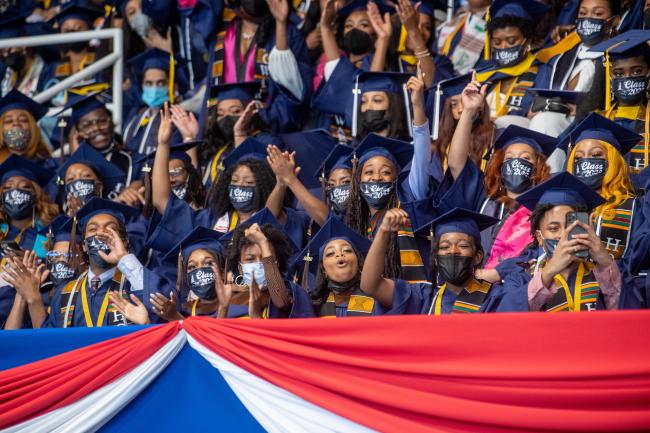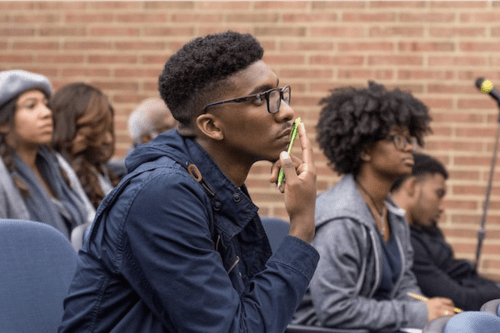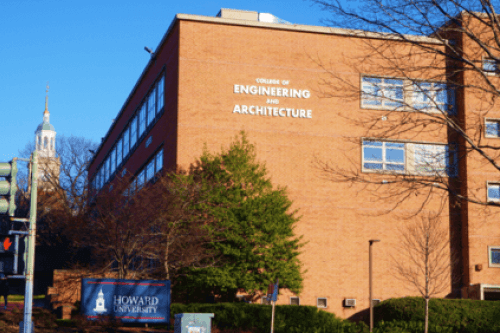Nationally, Black students graduate at rates 20% lower than their white counterparts. This education gap is a symptom of the inequities seen across every sector of society. Howard is striving to close the gap by improving graduation rates among its students.
In 2018, the University launched the Howard Forward Strategic Plan and set its sights on reaching a 70% four-year and 80% six-year graduation rate by 2024. Howard set that goal to ensure more students from diverse backgrounds have access to an education that will change their lives and our society.
“While our work is not done, we are proud of the progress we have made thus far to meet the ambitious goals in the strategic plan,” says Anthony K. Wutoh, Ph.D., R.Ph., provost and chief academic officer.
The Howard University Class of 2022 has carried forward recent strides in consistently high graduation rates, with 59% four-year and 70% six-year graduation rate. The three-year graduation rate was also 4% – an all-time high at Howard. The graduation rate for the Class of 2022 soars 37% above the national average (23%) for first-time, full-time HBCU students.
Howard is striving to close the gap by improving graduation rates among its students.”
“As a leading HBCU and a critical access point to social mobility in the Black community, Howard is uniquely positioned to incubate solutions to the challenges facing Black students and institutions nationwide,” says Rashad M. Young, senior vice president and chief strategy officer.
Since the launch of the strategic plan, Howard has implemented evidence-based strategies to bolster undergraduate access, retention, and on-time degree completion.
The Office of Undergraduate Studies was launched in 2014 and has served as a driving force for institutional improvements, establishing high-impact retention programs that increase the maximum number of credit hours permitted without additional tuition charges, standardizing graduation requirements, and utilizing data to identify early intervention opportunities for at-risk students.
In-parallel, Howard has dedicated resources to develop digital tools that modernize the graduation process, including Degree Works, Bison Web, Bison Advisor and other solutions that help students better track their progress to graduation, placing students in the driver’s seat of their own success.
Howard refuses to let economic status be a predictor of academic success for students as we make progress toward our goal to decrease the drop-out rate due to financial hardship to zero.”
These academic support initiatives work in tandem with Howard’s already leading need and merit-based financial aid programs. The Frederick Administration has bolstered need and merit-based funding by nearly 23 percent through innovative programs like the GRACE Grant to increase access and ensure a Howard education is affordable. From 2012 to 2022, the average per student financial aid package increased by more than 20%, even as the entering class size increased from 1,376 to 2,358. Today, roughly half of the University’s undergraduates are eligible for Pell Grants, outpacing local peer institutions and peer HBCUs. Howard’s tuition and fees are significantly lower than institutions with similar rankings and almost half as much as private institutions in the Washington, D.C. area.
“Every class of Bison has included many first-generation and under-resourced students and tasked them with succeeding in an already challenging college landscape, while also battling systems of inequity that disproportionately impact them,” Wutoh says. “Howard refuses to let economic status be a predictor of academic success for students as we make progress toward our goal to decrease the drop-out rate due to financial hardship to zero.”
Howard has educated doctors that have revolutionized medicine, researchers that have changed our understanding of the world, poets and artists that have enlightened and inspired, heads of state, Olympians, and many more. Howard is committed to building on that history by providing a world class education and the support to ensure that students succeed on and off campus.
“Never before has the Bison community made it clearer that Howard is an engine of social mobility. And while we are ensuring more Bison make it across the finish line each year than ever before, this is just the beginning,” Young said. “The policy changes and investments that powered these remarkable gains will have a reverberating impact on our Bison communities for years to come, especially on the students that keep Howard Howard.”






